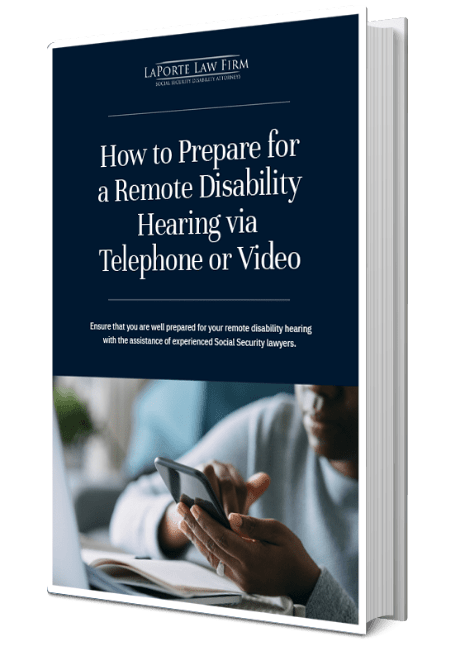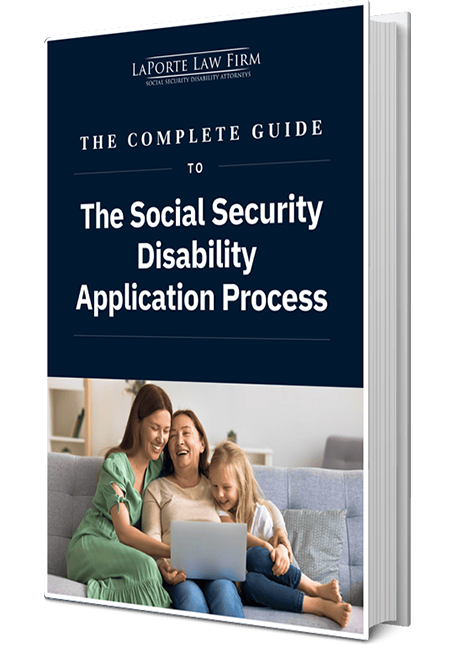
Understanding Residual Functional Capacity
Residual functional capacity is a legal and medical term used by the Social Security Administration (SSA) to describe what type of work, if any, you can still do despite your impairments. The SSA evaluates both physical and mental limitations to determine whether you are capable of sustaining full-time work on a regular and continuing basis (defined as eight hours a day, five days a week), and whether you can return to past work or adjust to other types of work. An RFC can be completed by an SSA medical consultant or, ideally, by your own treating physician, using their familiarity with your condition to provide a more personalized and supportive evaluation. Whether you are new to the disability application process or in the middle of an appeal, understanding how to use the RFC form can make a meaningful difference in the outcome of your case.Components of the RFC Form
The RFC form is structured to evaluate various domains of functioning. Each section helps the SSA understand how your symptoms translate into real-world limitations.Physical abilities assessment
This form evaluates factors such as:- How long you can stand or sit at a time
- How much weight you can lift or carry
- Your ability to walk, bend, crouch, or climb stairs
- Your fine motor control (e.g., typing or using your hands)
We should clarify here that in adult disability cases, the RFC form evaluates the physical ability to perform work-related activities, such as standing, walking, lifting, sitting, using hands, or climbing stairs. The treating provider is asked to identify a person’s maximum capacities and functional limits throughout an eight-hour workday. For instance, they may document that due to degenerative disc disease, you can sit for only 30 minutes at a time, that neuropathy in your hands limits your ability to type or write, that you cannot stand for more than 10 minutes without pain, or that you can lift no more than 5 pounds occasionally due to spinal issues. But what about children applying for disability benefits through the Supplemental Security Income (SSI) program? RFC forms in children’s cases function a little differently. Since children are not expected to work, the SSA does not evaluate their ability to perform work tasks. Instead, the SSA assesses how the child functions in comparison to other children of the same age without impairments. RFC-like assessments in these cases focus on domains of functioning, three of which specifically focus on mental and behavioral capacities:
- Acquiring and using information: Can the child learn and use language, understand concepts, or keep up with schoolwork?
- Attending and completing tasks: Can the child focus, follow instructions, and complete age-appropriate activities independently?
- Interacting and relating with others: Can the child form relationships, engage in socially appropriate behavior, and handle conflict?
- Moving about and manipulating objects: Does the child have the ability to physically move their body and interact with their environment in an age-appropriate way? The SSA looks at both gross and fine motor skills.
- Caring for oneself: Can the child maintain his personal needs and emotional well-being, such as dressing, bathing, feeding, understanding safety, and regulating emotions? Does the child have coping skills and responses to stress?
- Health and physical well-being: Are there cumulative physical effects of the child’s impairments over time, including how often symptoms flare up or cause functional limitations, missed school days, or hospitalizations?
Medical and educational records, such as IEPs, therapy notes, psychological testing, teacher’s questionnaires, and doctor evaluations, are used to understand the child’s day-to-day functioning. Doctors may complete specialized pediatric forms or submit narrative letters describing how the child’s physical or developmental limitations impact their activities at home, in school, or social settings. So while an adult RFC form focuses on what kind of work you can still do, a child’s functional assessment focuses on how severely their limitations interfere with age-appropriate functioning. Both aim to measure residual abilities in light of diagnosed impairments, but through age-relevant criteria.
Mental capacities evaluation
Here, your mental and cognitive limitations are outlined. This includes:- Memory and concentration
- Ability to follow instructions
- Tolerance for work pressure and routine changes
- Interaction with coworkers or supervisors
A person with PTSD, for example, may be documented as having frequent episodes of panic that interfere with focus and decision-making. In adult disability claims, the mental portion of the RFC form evaluates a person’s ability to perform tasks such as following instructions, maintaining focus, handling workplace stress, interacting with coworkers and supervisors, and completing a normal workday without interruptions from psychological symptoms. For example, a doctor might note that due to major depressive disorder, the claimant has marked limitations in concentration and would miss more than four days of work per month. In children’s cases, the evaluation of mental and emotional functioning follows a different structure. And again, since children aren’t expected to work, the Social Security Administration doesn’t use an adult mental RFC form. Instead, the SSA looks at how the child’s mental impairments interfere with their ability to function compared to other children of the same age who don’t have impairments. The evaluation is structured around the same six domains of functioning mentioned above. For example, a child with ADHD or autism might show severe difficulty in attending to and completing tasks or interacting with peers. These limitations may be reflected in psychological testing, school IEPs, therapy records, or evaluations from child psychologists or developmental pediatricians. The SSA will assess whether the child has “marked” or “extreme” limitations in at least two of the six domains. This evaluation serves a similar purpose as a mental RFC in adult claims; it provides a structured way to measure how mental health conditions impair daily functioning, just tailored for a child.
Sensory and environmental restrictions
This section identifies how your condition affects your ability to function in certain environments, including:- Sensitivity to light, noise, or fumes
- Need to avoid temperature extremes or certain allergens
- Limitations in vision or hearing
If you suffer migraines triggered by fluorescent lights, for example, this may be crucial in ruling out office work.
Role of Medical Professionals in RFC Evaluation
An RFC form is most credible when completed by a licensed medical professional who has a treatment history with you, typically your primary care physician or a relevant specialist (such as a psychiatrist, neurologist, or rheumatologist). The SSA gives more weight to opinions from treating providers who can support their assessment with clinical findings and longitudinal records. Avoid relying on walk-in clinics or providers with minimal involvement in your case, as their opinions may carry less evidentiary weight.Importance of the RFC Form in Disability Claims
The RFC form plays a central role in determining whether you qualify for Social Security Disability Insurance (SSDI) or Supplemental Security Income (SSI). It serves as the bridge between your medical evidence and the legal criteria used by the SSA to assess disability.Understanding the Social Security disability process
The SSA uses the five-step sequential evaluation outlined below. At Steps 4 and 5, the agency assesses whether you can return to work you have previously performed, or can adjust to other work that exists in the national economy. This is where the RFC becomes key.- Are you working? The SSA first checks if you’re doing substantial gainful activity (SGA). If you’re earning above a certain amount (currently $1,620 per month in 2025 for non-blind individuals), your claim will likely be denied at step 1.
- Is your condition severe? Your medical impairments must significantly limit your ability to do basic work-related activities. If your condition is considered non-severe, the process stops here.
- Does your condition meet or equal a listing? The SSA has a Blue Book of impairments. If your condition matches (or is equivalent in severity to) a listed impairment, you may be approved automatically at this step.
- Can you do your past work? The SSA looks at your RFC to see if you can still do any of your past jobs. If you can, you’re not considered disabled.
- Can you do any other work? If you can’t return to past work, the SSA decides whether you can adjust to other work that exists in significant numbers in the national economy, taking into account your age, education, work experience, and RFC.
Determining work-related limitations
Your residual functional capacity tells the Social Security Administration what kinds of work activities you can still do despite your medical impairments. If your RFC limits you to sedentary work, which typically involves mostly sitting and minimal physical exertion, but your past work required medium lifting (you had to lift objects weighing up to 50 pounds) or heavy lifting (over 50 pounds), the SSA may determine that you can no longer perform your past relevant work. If you also meet certain age, education, or transferable skills criteria that limit your ability to transition into a less physically demanding job, the SSA may find you disabled under its Medical-Vocational Guidelines (also called the Grid Rules). For example, a person over age 50 with limited education and no transferable job skills who is limited to sedentary work may be found disabled if they previously worked in physically demanding jobs.Supporting authority:
- 20 C.F.R. §§ 404.1545 and 416.945: Definition and use of RFC in disability claims
- 20 C.F.R. §§ 404.1560 – 404.1569 and 416.960 – 404.969: Past relevant work and use of the Medical-Vocational Guidelines (Grid Rules)
- Social Security Ruling (SSR) 96-8p: Policy interpretation on how the SSA assesses RFC
- SSA’s POMS DI 25001.001: The SSA’s internal guidance on RFC and vocational factors
Filling Out the RFC Form
Not just anyone can fill out an RFC form and have it count. To carry weight with the SSA, an RFC form must come from a qualified medical provider. As discussed, the most persuasive RFC forms typically come from your treating physician or specialist, someone who knows your medical history and has seen you regularly. If their opinion is backed by medical evidence, the SSA may give it significant weight.Accepted medical providers
The SSA recognizes RFC forms from these licensed professionals:- Medical doctors (MD, DO)
- Psychologists (PhD, PsyD)
- Optometrists (for vision issues)
- Podiatrists (for foot/ankle problems)
- Speech-language pathologists
- Nurse practitioners and physician assistants (in most newer claims)
Supporting authority
- 20 C.F.R. §§ 404.1527(c), 416.927(c): Applicable to claims filed before March 27, 2017
- 20 C.F.R. §§ 404.1520c, 416.920(c): Applicable to claims filed on or after March 27, 2017; treats all medical opinions equally, but still considers factors such as supportability, consistency, and the relationship with the claimant
Not accepted, but still helpful
The SSA does not give formal weight to RFC forms from:- Chiropractors
- Physical therapists
- Social workers
Supporting authority:
- 20 C.F.R. §§ 404.1502(a), 416.902(a): Defines “acceptable medical sources”
- SSA’s POMS DI 24501.001: Acceptable medical and psychological evidence
Tip: Always try to get your own treating provider to complete an RFC form. Their firsthand experience with your condition is often the strongest evidence in your case.
Supporting authority:
- SSR 06-03p: Rescinded for claims filed on or after 3/27/17, but still referenced in older claims
- 20 C.F.R. §§ 404.1513(a)(3), 416.913(a)(3): Other medical sources, state agency medical consultants
Gathering necessary medical documents
Before your doctor fills out the RFC form, it helps to gather:- Office visit notes
- Imaging results (e.g., MRIs, X-rays)
- Lab results
- Surgery records
- Consultative examination reports
These documents provide the foundation for your doctor to give specific and defensible limitations.
Providing detailed personal information
Your own input matters. Let your doctor know how your condition affects your daily life, such as getting dressed, shopping, cooking, or dealing with stress. These real-world struggles can help put your functional limitations in context.Describing limitations accurately
The RFC form is not the place for exaggeration, but it is equally important not to downplay your symptoms. Specific, concrete examples work best. Instead of saying “I get tired easily,” a better description would be, “After standing for 10 minutes, I feel dizzy and have to sit down for at least 30 minutes.”Common Challenges During the RFC Process
The RFC assessment plays a crucial role in Social Security disability claims, but it is not always a smooth process. From obtaining a form from your doctor to making sure it’s completed accurately, here are some of the most common challenges people face:Doctors refusing to complete the form
Many doctors are reluctant to fill out RFC forms. Some feel they don’t have the time, while others are unfamiliar with the legal significance or worry about getting involved in a disability case. It often takes thoughtful explanation, and sometimes persistence, to secure their help.Misinterpretation of questions
Some questions ask how often or how long you can perform a task, not whether you can do it once. Your doctor may unintentionally mark that you can stand for three hours without realizing the form is asking whether you can do that throughout an eight-hour workday.Inconsistent or unsupported opinions
If an RFC form contains extreme limitations that aren’t backed up by your medical records, such as imaging, lab results, or treatment notes, the SSA may give the opinion little or no weight. An RFC needs to be well supported and internally consistent with your medical history and records to be persuasive.Forms completed by unqualified providers
While chiropractors, physical therapists, and social workers may be deeply involved in your care, their opinions are not considered acceptable “medical opinions” under SSA rules. If your only RFC comes from a non-accepted source, the SSA may disregard it entirely.State agency doctors who never examine you
If no treating provider submits an RFC, the SSA often relies on a state agency doctor who reviews your records, but never meets you in person. These “paper reviews” can lead to underestimated limitations, especially in complex or subjective conditions such as chronic pain or mental illness.Incomplete or inaccurate information
An effective RFC should address not just physical limitations (such as how long you can sit or stand), but also mental, sensory, and environmental restrictions. Incomplete forms may fail to capture the full extent of your disability. Missing sections or vague language such as “limited mobility” can lead to delays or denials. Encourage your provider to be detailed and to explain any checked boxes with clinical evidence or real-world examples.Tips for Effective RFC Form Submission
Navigating the RFC process can be challenging, but getting it right is often the key to winning your case. A well-prepared RFC from a qualified provider, backed by consistent medical records, can make a powerful difference. Here are a few tips for effective RFC form submission:Ensuring comprehensive information
Before submitting your RFC form to the SSA, review it for completeness. Make sure your doctor did not miss any sections on the form, as this reduce its usefulness.Double-checking for consistency
Your RFC should align with the rest of your medical record. If your doctor’s notes say you are “doing well,” but the RFC states you are unable to function, the SSA may question the accuracy of the form.Collaborating with medical experts
Don’t spring the form on your doctor without notice. Set an appointment to review it together. Your collaborative approach can result in a more accurate and persuasive form.Need Help with Your RFC or Disability Claim?
At LaPorte Law Firm, we have guided thousands of claimants through the Social Security disability process. If you are unsure how to approach the RFC form, or if your claim was denied, we are here to help. Contact us today.FAQS
An RFC form assesses what work-related tasks you can still perform despite your impairments. Or, in children’s cases, it serves as a structured evaluation of how the child’s physical or mental impairments limit their ability to function in age-appropriate ways across key developmental domains. The RFC is an essential form for anyone applying for SSDI or SSI.
Licensed treating medical providers, such as physicians, psychiatrists, or specialists, should complete the form. The SSA also uses internal medical consultants to create RFCs when needed.
The RFC is a critical piece of evidence used to determine if you can work. A well-supported RFC can tip the balance in your favor.
All work-related limitations — walking, standing, lifting, concentrating, social interaction, or environmental restrictions — should be included. Be as specific as possible.
Technically, yes, you can submit an RFC form without your doctor’s help. However, doing so is generally not recommended and may carry little weight in the Social Security Administration’s evaluation of your disability claim.
Why? Because SSA regulations and case law place significant emphasis on medical opinions from acceptable medical sources, particularly those from treating physicians who have an ongoing relationship with the claimant. These are the professionals best positioned to assess your functional limitations based on their direct observations, clinical findings, and treatment history.
If you fill out the RFC form yourself or with the help of a nonmedical professional (such as a friend or family member), the SSA may consider it only as a lay statement, helpful for providing personal context, but not sufficient for establishing medical limitations. In contrast, a completed RFC from your treating doctor or specialist, particularly one supported by medical evidence, is far more persuasive.
In fact, under SSA regulations (20 C.F.R. §§ 404.1520c and 416.920c), medical opinions are evaluated for their supportability and consistency with the overall record. A doctor’s RFC that is well supported by diagnostic imaging, progress notes, and clinical observations can be the linchpin of a successful claim, especially when the SSA is assessing your ability to work at step 4 or step 5 of the sequential evaluation process.
That said, if you are unable to obtain a medical source statement for any reason, you can still provide detailed written testimony about your daily functioning, symptoms, and limitations. This can be included in your Adult Function Report (SSA-3373), your statement in a form SSA-795, or testimony during your hearing. But ideally, these accounts should complement a medical RFC, not replace it.
In summary:
- You can submit an RFC without your doctor, but it is unlikely to carry significant evidentiary weight on its own.
- It is best to work with a medical provider who can complete the form accurately and support their opinion with objective findings and medical records.
If your provider is hesitant or unfamiliar with the form, consider scheduling time to go over it together. Your legal representative can also help bridge the gap by explaining the form’s purpose.
















